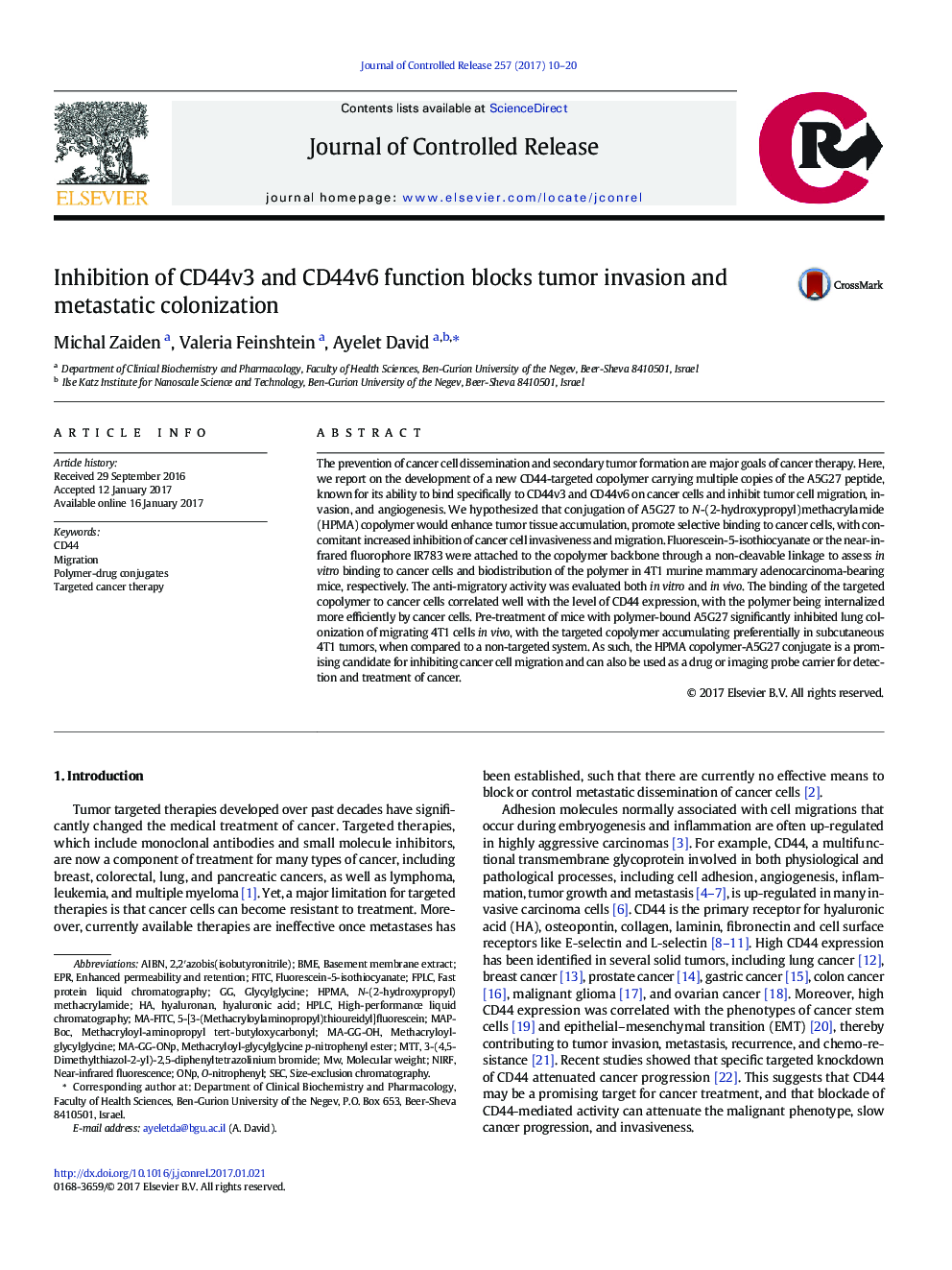| Article ID | Journal | Published Year | Pages | File Type |
|---|---|---|---|---|
| 5433685 | Journal of Controlled Release | 2017 | 11 Pages |
The prevention of cancer cell dissemination and secondary tumor formation are major goals of cancer therapy. Here, we report on the development of a new CD44-targeted copolymer carrying multiple copies of the A5G27 peptide, known for its ability to bind specifically to CD44v3 and CD44v6 on cancer cells and inhibit tumor cell migration, invasion, and angiogenesis. We hypothesized that conjugation of A5G27 to N-(2-hydroxypropyl)methacrylamide (HPMA) copolymer would enhance tumor tissue accumulation, promote selective binding to cancer cells, with concomitant increased inhibition of cancer cell invasiveness and migration. Fluorescein-5-isothiocyanate or the near-infrared fluorophore IR783 were attached to the copolymer backbone through a non-cleavable linkage to assess in vitro binding to cancer cells and biodistribution of the polymer in 4T1 murine mammary adenocarcinoma-bearing mice, respectively. The anti-migratory activity was evaluated both in vitro and in vivo. The binding of the targeted copolymer to cancer cells correlated well with the level of CD44 expression, with the polymer being internalized more efficiently by cancer cells. Pre-treatment of mice with polymer-bound A5G27 significantly inhibited lung colonization of migrating 4T1 cells in vivo, with the targeted copolymer accumulating preferentially in subcutaneous 4T1 tumors, when compared to a non-targeted system. As such, the HPMA copolymer-A5G27 conjugate is a promising candidate for inhibiting cancer cell migration and can also be used as a drug or imaging probe carrier for detection and treatment of cancer.
Graphical abstractDownload high-res image (180KB)Download full-size image
